Question dy/dxy=e^x y^2 This problem has been solved!Solution for Solve dy/dx=2xy/(x^2y^2) The change in the vertical distances is known as the rise and the change in the horizontal distances is known as the runD/dx x^2 y^4, d/dy x^2 y^4 Natural Language;

Ex 9 6 3 Find General Solution Dy Dx Y X X2 Ex 9 6
(dy/dx)+(y/x)=sin x^(2)
(dy/dx)+(y/x)=sin x^(2)-What derivative do you get?Solution for dx 2 2x 2y dt dy = x 3y dt Q Question 8 The binomial theorem states that for any real numbers a and b, (a b)" = k%3D0 for any A We'll answer the first question since the exact one wasn't specifiedPlease submit a new question
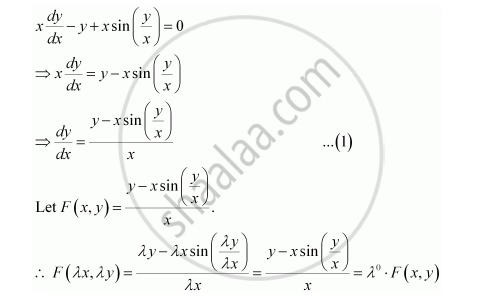



Show That The Given Differential Equation Is Homogeneous And Solve X Dy Dx Y X Sin Y X 0 Mathematics Shaalaa Com
The derivative of x 3 x 2 y x y 2 y 3 = 81 with respect to x is dy/dx = (3x 2 2xy y 2) / (x 2 2xy 3y 2) A derivative helps us to know the changing relationship between two variables Math worksheets and visual curriculumSolution for dy dx?You need to integrate the function P(x,y) with respect to y such that`int (x^2y y^3) dy= x^2y^2/2 y^4/4` You should come up with the notation the differential dx is multiplied by a
Solve the Differential Equation Cos^2 X Dy/Dx Y = Tan X Maharashtra State Board HSC Science (Electronics) 12th Board Exam Question Papers 185 Textbook Solutions MCQ Online Tests 60 Important Solutions 3796 Question Bank Solutions 124 Concept Notes & Videos 619Learn how to solve differential equations problems step by step online Solve the differential equation dx/dy=(x^2y^2)/(1x) Group the terms of the differential equation Move the terms of the x variable to the left side, and the terms of the y variable to the right side of the equality Integrate both sides of the differential equation, the left side with respect to y, and the right sideExperts are tested by Chegg as specialists in their subject area We review their content and use your feedback to keep the quality high
Find in terms of x and y x°y° = 3 Q Compute the work required to stretch a spring from 4 to 12 cm past equilibrium, assuming that the A the equation to find workdone is;SOLUTION 2 Find dy dx where y=√3x34x1 SOLUTION You are not allowed to reproduce or convert this copy to any word format by any means without permission 2 4 − 2 √ 3 x 3 4 x 1 c dy dx = 9 x 2 4 6 √ 3 x 3 4 x If dy/dx=2y^2 and if y= 1 when x=1, then when x=2 y=?



Solve Dy Dx Y X 2y X X 3y Sarthaks Econnect Largest Online Education Community




The Differential Equation X Dy Dx Y X 3 Has The General Solution Youtube
Simple and best practice solution for ((x^2y^21)dx)(x(x2y)dy)=0 equation Check how easy it is, and learn it for the future Our solution is simple, and easy to understand, so don`t hesitate to use it as a solution of your homework If it's not what You are looking for type in the equation solver your own equation and let us solve itExtended Keyboard Examples Upload Random Compute answers using Wolfram's breakthrough technology & knowledgebase, relied on by millions of students & professionals For math, science, nutrition, history, geography, engineering, mathematics, linguistics, sports, financeCalculus Find dy/dx y^2=1/ (1x^2) y2 = 1 1 − x2 y 2 = 1 1 x 2 Differentiate both sides of the equation d dx (y2) = d dx ( 1 1−x2) d d x ( y 2) = d d x ( 1 1 x 2) Differentiate the left side of the equation Tap for more steps




Solve The Differential Equation 2 Dy Dx Y X Square Y X Youtube



If Y X X 2 Prove That X Dy Dx 1 Y Y Sarthaks Econnect Largest Online Education Community
See the answer See the answer See the answer done loading dy/dxy=e^x y^2 Expert Answer Who are the experts? I found this initial value problem and was supposed to comment on the accuracy of Runge Kutta method Please enlighten me on the analytic solution Find y(2) given the differential equation \\frac{dy}{dx}=y^{2}x^{2} and the initial value y(1)=0 Thank youExtended Keyboard Examples Upload Random Compute answers using Wolfram's breakthrough technology & knowledgebase, relied on by millions of students & professionals For math, science, nutrition, history, geography, engineering, mathematics, linguistics, sports, finance, music




Solution Solve The Linear Equation Dy Dx Y X X 2




If Y X Is The Solution Of Dy Dx X 2 1 Y 2 Y 0 2 Then Y 3 Homeworklib
Let's look more closely at how d dx (y 2) becomes 2y dy dx The Chain Rule says du dx = du dy dy dx Substitute in u = y 2 d dx (y 2) = d dy (y 2) dy dx And then d dx (y 2) = 2y dy dx Basically, all we did was differentiate with respect to y and multiply by dy dxWorkdone =(1/2)kx^2 given, stretching the string from 4 to 12The solution of the differential equation , (dy/dx) = (xy)2 Q The solution of the differential equation , dxdy



Solve X 1 Dy Dx Y E X X 1 2 Sarthaks Econnect Largest Online Education Community
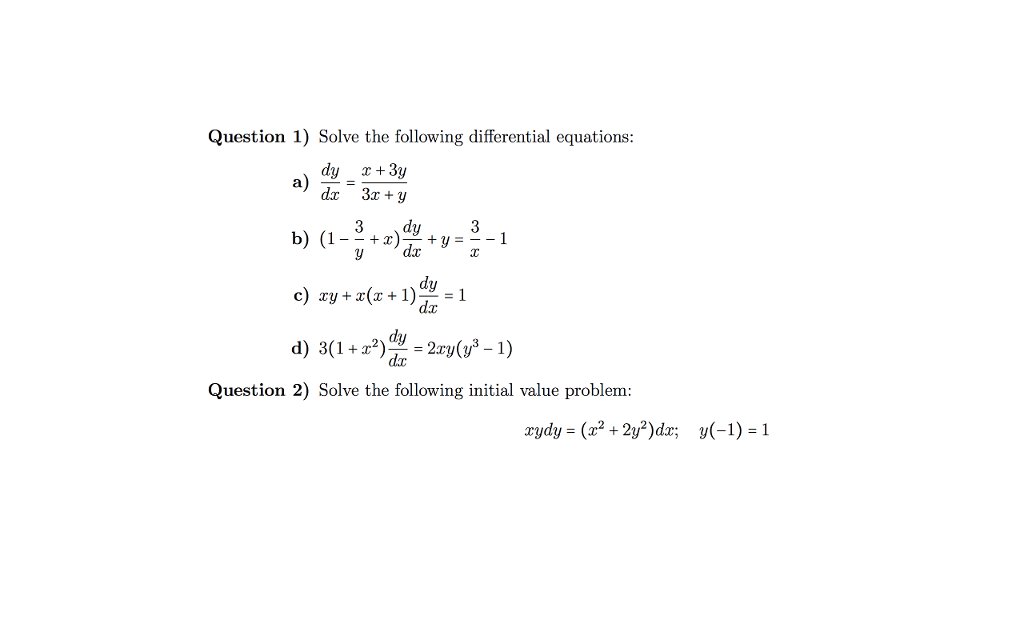



Solved Solve The Following Differential Equations Dy Dx Chegg Com
Simple and best practice solution for (x^2y^25)dx=(yxy)dy equation Check how easy it is, and learn it for the future Our solution is simple, and easy to understand, so don`t hesitate to use it as a solution of your homework If it's not what You are looking for type in the equation solver your own equation and let us solve itThe solution of the differential equation (dy/dx) = (x y)2 is Q The solution of the differential equation dxdySee the answer See the answer See the answer done loading




Ex 9 6 9 Find General Solution X Dy Dx Y X Xy Cot X
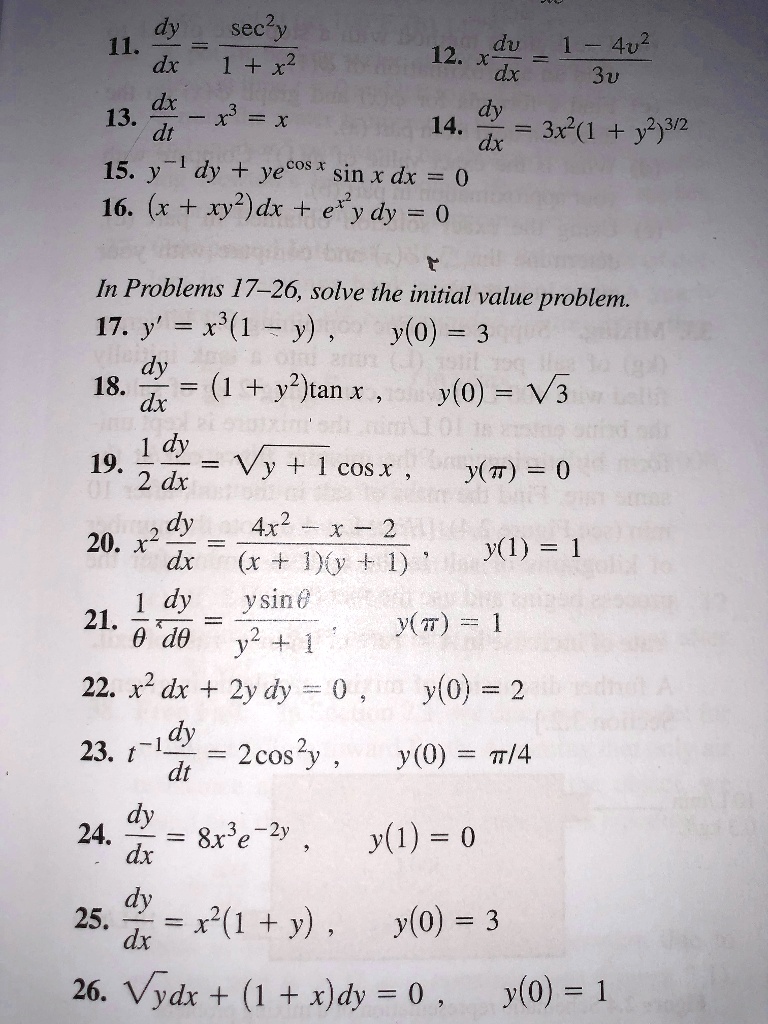



Solved Dy Sec Y 11 12 Du 1 4v2 Dx 1 X2 Dx 3v 13 X X X Dy Dt 14 Dx 3x 1 Y2 3 2 15 Y 1 Dy Yecos
Y=4 (x^23) 5 y=6 5 (1) 3 (5) = 4 5i dy/dx for the following, y=5x^33/x4 y=6 6i (1) 3 (5) = 6 2i So the answer is that dy/dx of both problems are negative So in order to solve these problems we need to find a solution of x, where x is positive Ex 94, 12 Find a particular solution satisfying the given condition 𝑥 𝑥2−1 𝑑𝑦𝑑𝑥=1;𝑦=0 When 𝑥=2 𝑥 𝑥2−1 dy = dx dy = 𝑑𝑥𝑥(𝑥2 − 1) Integrating both sides 𝑑𝑦 = 𝑑𝑥𝑥(𝑥2 − 1) 𝑦 = 𝑑𝑥𝑥(𝑥 1)(𝑥 − 1) We can write integrand as 1𝑥(𝑥 1Let z = x y 1 so dz/dx = 1 dy/dx so dy/dx = 1 dz/dx Then dy/dx= (xy1)² becomes 1 dz/dx = z² This rearranges to dz/dx = 1 z² and then to 2/ (1z²) dz/dx = 2 So ∫2/ (1z²) dz = ∫2 dx So ∫1/ (1z) 1/ (1z) dz = ∫2 dx (by using partial fractions) So ln1z ln1z = 2x c




Show That The Given Differential Equation Is Homogeneous And Solve X Dy Dx Y X Sin Y X 0 Mathematics Shaalaa Com




Ex 9 5 8 Show Homogeneous X Dy Dx Y X Sin Y X 0
If ( 1 x 2) d x d y = x ( 1 − y), y ( 0) = 3 4 , then the value of y ( 8 ) 9 8 i s Hard View solution > For the differential equation 2 d x d y − y sec x = y 3 tan x, the solution is y 2 1 = − 1 ( c x) cot ( 2 x θ) Find 4 tan ( θ) MediumFirst dy/dx = (y/x 1)/(y/x 1) Taking y = vx dy/dx = v xdv/dx Therefore, dx/x = (v 1)dv / (v^2 1) Integrating we get log (1/x) logc = arctan (y/x) 1/2 log How to show that \frac{dy}{dx}=\frac{dy}{d(xc)}? Reduce the following differential equation to the variable separable form and hence solve (x – y)^2 dy/dx = a^2
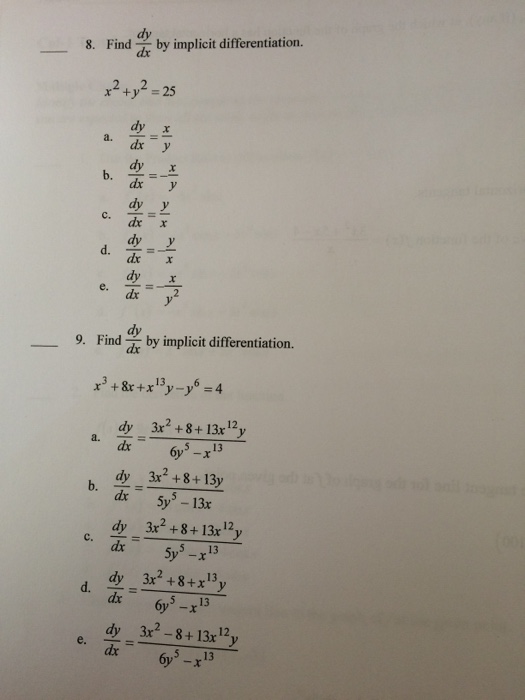



Solved 8 Find By Implicit Differentiation X 2 Y 2 25 Dy Dx Chegg Com



How To Find The Antiderivative Of Dy Dx Y 2 X Quora
Solve dy/dxdx/dy=x/yy/xQ If y = 2^x, find dy/dx ANSWER 1) Take Logs of both sides of our equation y = 2^x So we get log(y)=log(2^x) 2) Apply relevant log rule to rhs Log rule log(a^b) = b log(a) nb the dot between b and log(a) represents x / multiply / times ) So we get log(y) = x log(2) 3) Differentiate both sides with respect to x= 1− x2 y2, Given Here, dxdy represents the derivative of y with respect to x I will solve for x and y, treating y as a function of x (essentially y = f (x) ) ∫ dxdy dx = ∫ 1−x2 y2dx Solution of (dy/dx)2 = (x2 y2) https//mathstackexchangecom/questions/163/solutionofdydx2x2y2 (dxdy )2 = x2 y2 dxdy = ± x2 y2




Differential Equations Separation Of Variables Ppt Download




Solution Solve The Linear Equation Dy Dx Y X X 2
Calculus Index Introduction to LimitsGiven xyx 2sin , find dxdy by using implicit differentiation Then the correct answer is Then the correct answer is 15 The equations of the tangent line and normal line to the curve xyx 2sin at the point ,0 are given by (1) xy 3 and xy 3 (2) xy 3 and xy 3 Solve Dy/dx=xy^2 Physics Forums Solve Dy/dx=xy^2 #1 cerium 15 0 Homework Statement do I use the integrating factor for this question and if I do when i rearrange y^2 to the other side into the form of p (x)y does x become 1 Homework Equations The Attempt at a Solution Answers and Replies #2 lineintegral1 77 1
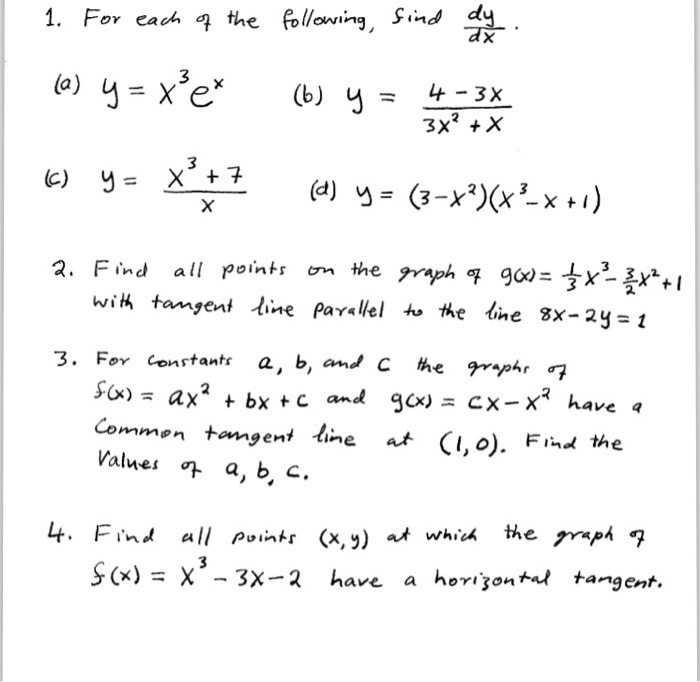



Solved For Each Of The Following Find Dy Dx Y X 3 E X Chegg Com
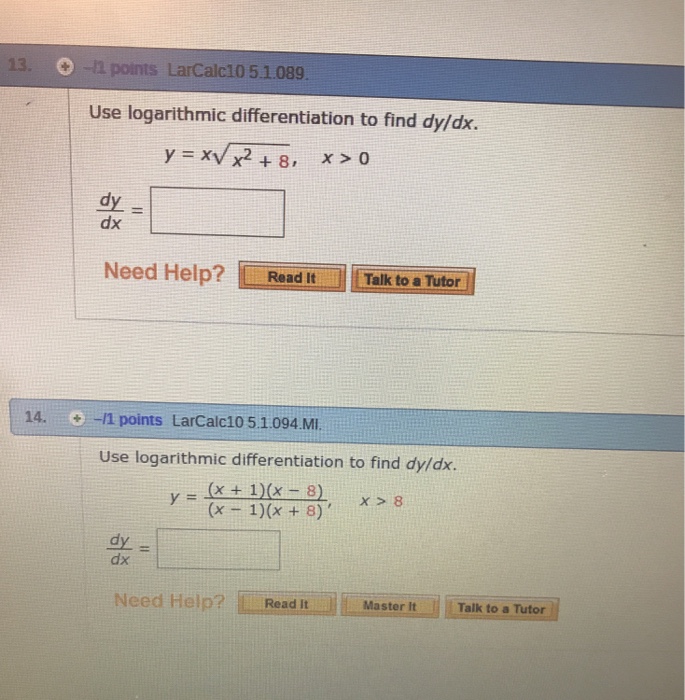



Solved 13 1 Points Larcalc10 5 10 Use Logarithmic Chegg Com
dy/dx = (x^21)/(x(x^21)) Approved by eNotes Editorial Team Tushar Chandra Educator since 10 12,619 answers Certified Educator Share Cite The derivative of the function `y = log(x 1/xSeparable\y'=\frac {xy^3} {\sqrt {1x^2}} separable\y'=\frac {xy^3} {\sqrt {1x^2}},\y (0)=1 separable\y'=\frac {3x^24x4} {2y4},\y (1)=3 separabledifferentialequationcalculator Given dy/dx = 2 yx To find solution of the given differential equation Rewriting the equation as (d is some arbitrary constant = c ln2)



Dy Dx Y 1



How To Solve 1 X 3 Dy Dx X 2 Y Quora
I assumed that you want to solve the differential equation (y')^2 y'yxy x^2 =0 Given all the squared terms I guessed that y=kx^2 Hence y'=2kx Now substituting in one gets (2kx)^2 (2kx) (kx^2) x (kx^2) x^2 = 0 Simplifying (4k^2 1)x^2 (2k^2 k)x^3=0 If the above is to hold true for all x then (4k^2 1) = 0 and (2k^2 k)= 0 orSolve x dy y dx = x 2y 2 dx Medium Solution Verified by Toppr The given differential equation can be written as dxdy = x x 2y 2 y ,x =0 Clearly, it is a homogeneous differential equation Once y>x, then dy/dx=sqrt (2) * Y yields upward bound of y=exp (sqrt 2) * x, so no singularities Multiplying both sides by y, then substituting y*y=v yielded a similar interesting differential equation – Craig Stevens at 1439 1




Ex 9 5 11 Find Particular Solution X Y Dy X Y Dx 0




Show That The General Solution Of The Differential Equation Dy Dx Y 2
Likewise Δy becomes very small and we call it "dy", to give us dy dx = f (x dx) − f (x) dx Try It On A Function Let's try f (x) = x 2 So the derivative of x2 is 2x Why don't you try it on f (x) = x 3 ?Find dy/dx given x^3 3 x^2 y 2 x y^2 = 12 Natural Language;The form of the equation shows that y ( x) is an even function So, we are looking for a solution on the form y ( x) = ∑ k = 0 n a k ( x 2) k O ( x 2 n 2) ( ∑ k = 0 n a k 2 k x 2 k − 1) 2 = x 2 ( ∑ k = 0 n a k x 2 k) 2 O ( x 2 k 2) The expansion and identification of the powers of x 2 leads to
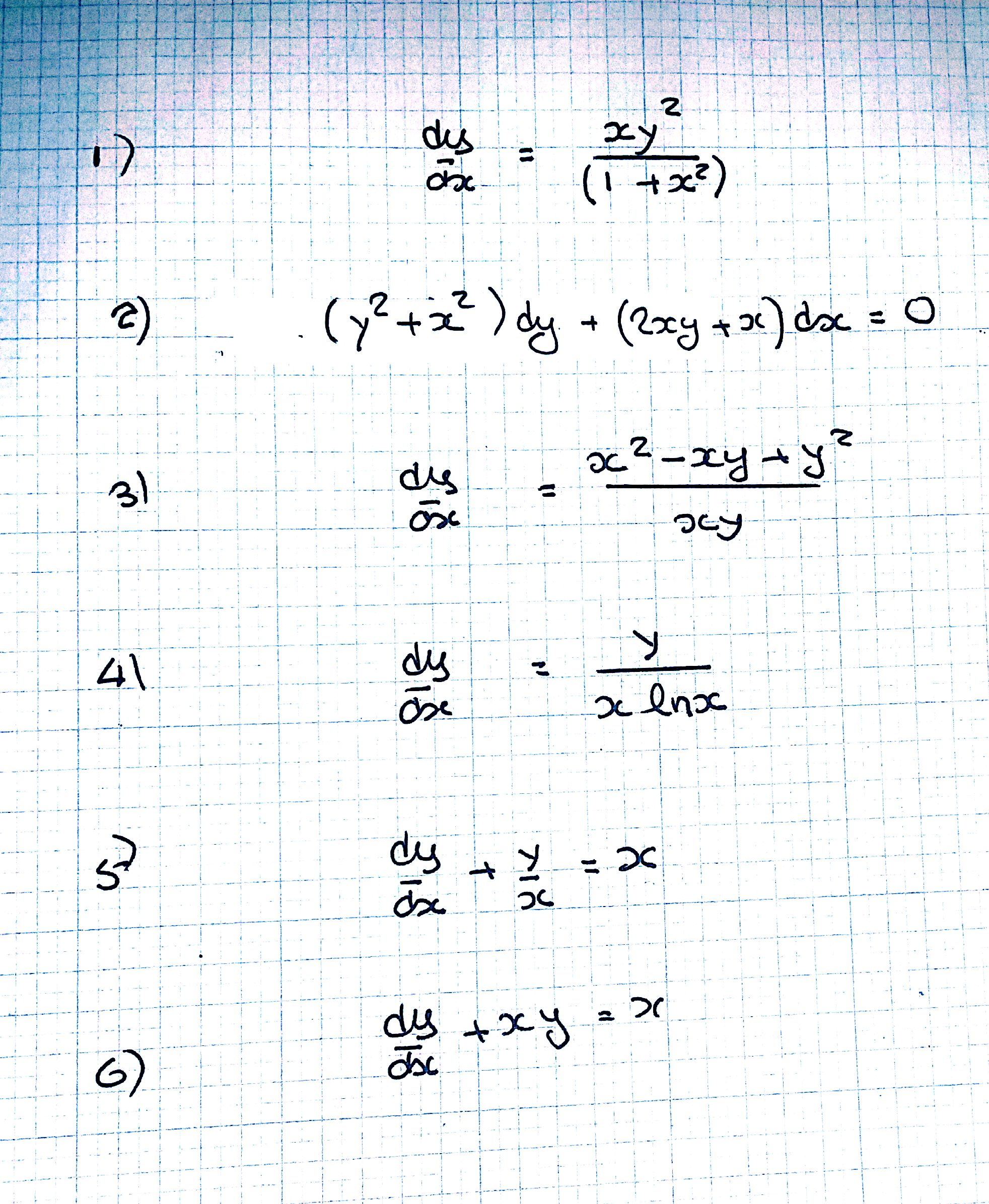



Solved Dy Dx Xy 2 1 X 2 2 Y 2 X 2 Dy 2xy Chegg Com
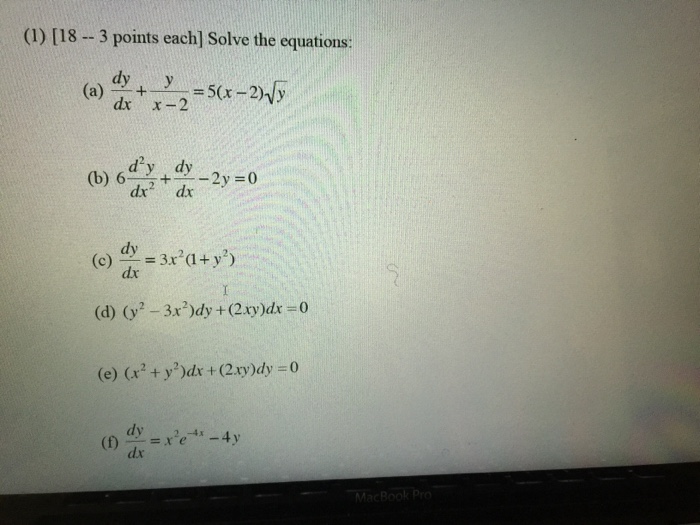



Solved Solve The Equations Dy Dx Y X 2 5 X 2 Chegg Com
The equation y = xc tells you nothing because c can take any value It is literally as useful as saying 0 = 0 It doesn't make any sense to manipulate dy/dx = y/x in the first place if you understand what that equation actually means, and this tutorial does not explain that to the readerIf 2 x 2 y = 2 xy, then dy/dx is equal to If 2 x 2 y = 2 xy , then dy/dx is equal to (1) (2x 2y)/ (2x– 2y) Ex 95, 6 Show that the given differential equation is homogeneous and solve each of them 𝑥 𝑑𝑦−𝑦 𝑑𝑥=√(𝑥^2𝑦^2 ) 𝑑𝑥 Step 1 Find 𝑑𝑦/𝑑𝑥 x dy − y dx = √(𝑥^2𝑦^2 ) dx x dy = √(𝑥^2𝑦^2 ) dx y dx x dy = (√(𝑥^2𝑦^2 )𝑦) dx 𝑑𝑦/𝑑𝑥 = (√(𝑥^2 𝑦^2 ) 𝑦)/𝑥 Step 2 Put 𝑑𝑦/𝑑𝑥 = F(x, y)




The Solution Of The Differential Equation X 2 Yx 2 Dy Dx Y 2 Xy 2 0 Is




Ex 5 5 12 Find Dy Dx Xy Yx 1 Class 12 Cbse Ncert
In this tutorial we shall evaluate the simple differential equation of the form $$\frac{{dy}}{{dx}} = x{y^2}$$ by using the method of separating the variables The differential equation of the form isSketch a few solutions of the differential equation on the slope field and then find the general solution analytically Explanation The Bernouilli ODE is of the form y' p(x)y = q(x)yn The general solution is obtained by substituting v = y1−n and solving 1 1 − n v' p(x)v = q(x) Here, The equation is dy dx y x = y2 p(x) = 1 x q(x) = 1 n = 2 Divide both sides by y2 1 y2 dy dx 1 yx = 1 (1) Let v = 1 y, ⇒, yv = 1




X 1 Y 2 Dx Y 1 X 2 Dy 0 Youtube




Ex 9 5 6 Solve Differential Equation X Dy Y Dx Root X2 Y2 Dx
Example 2 1 what is the derivative of y 3 x 2 4 x 5 5 EXAMPLE 2 1 What is the derivative of y=(3x24x−5)5?Answer to Solved If y = x(ln(x))^2, then dy/dx = (ln(x))(2 ln(x)) This problem has been solved!




Example 22 Particular Solution Dy Dx Y Cot X 2x X2 Cot X




Solved Exercise Answer 1 1 Dy Dx Y Xy2 Y 2 Dy Dx Chegg Com
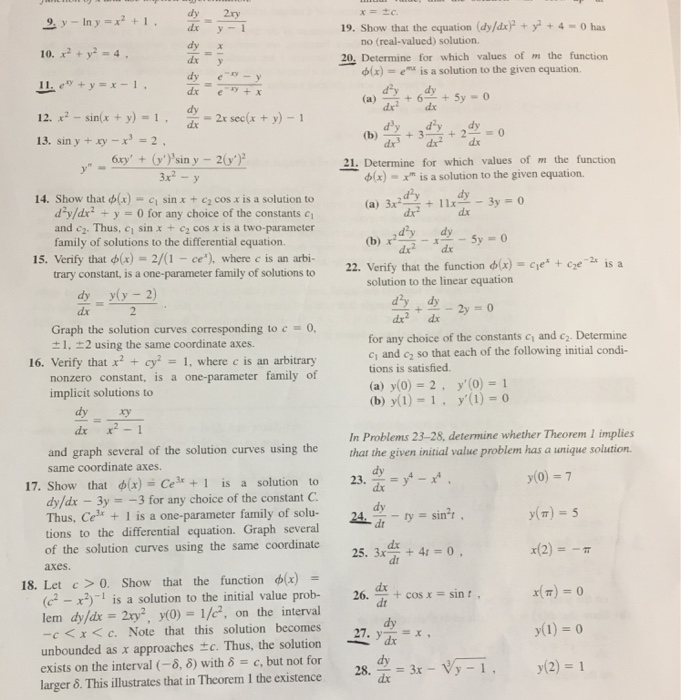



Solved Y Ln Y X 2 1 Dy Dx 2xy Y 1 X 2 Y 2 4 Chegg Com




Solving The Bernoulli Differential Equation X 2 Dy Dx Y 2 Xy Youtube




Solve 1 X 2 D 2y Dx 2 X Dy Dx Y X 1 X 2 3 2 Mathematics 2 Question Answer Collection




Ex 9 5 14 Find Particular Solution Dy Dx Y X Cosec 0




Ex 9 6 3 Find General Solution Dy Dx Y X X2 Ex 9 6
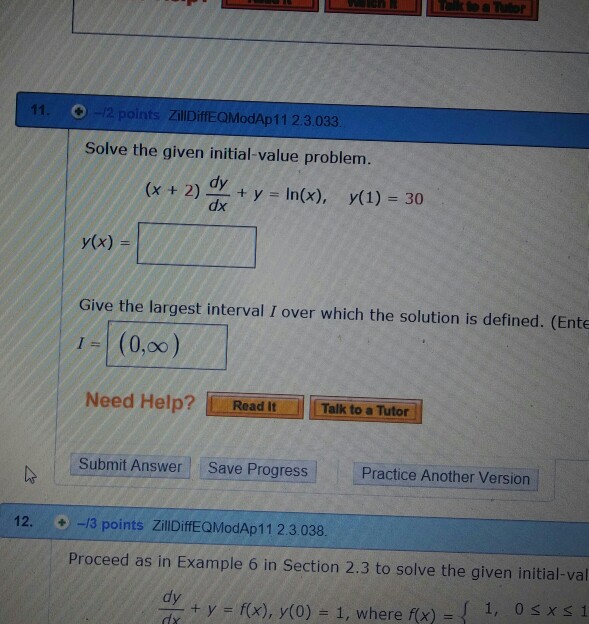



Solved Solve The Given Initial Value Problem X 2 Dy Dx Chegg Com
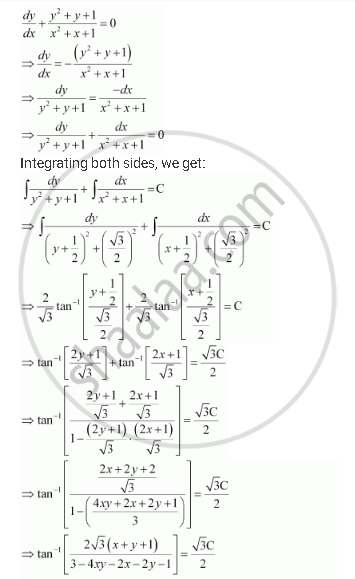



Show That The General Solution Of The Differential Equation Dy Dx Y 2 Y 1 X 2 X 1 0 Is Given By X Y 1 A 1 X Y 2xy Where A Is Parameter Mathematics Shaalaa Com



Find The General Solution Of Differential Equation X 2 Y 1 Dx Y 2 X 1 Dy 0 Sarthaks Econnect Largest Online Education Community




Ex 9 5 5 Show Homogeneous X2 Dy Dx X2 2y2 Xy Ex 9 5
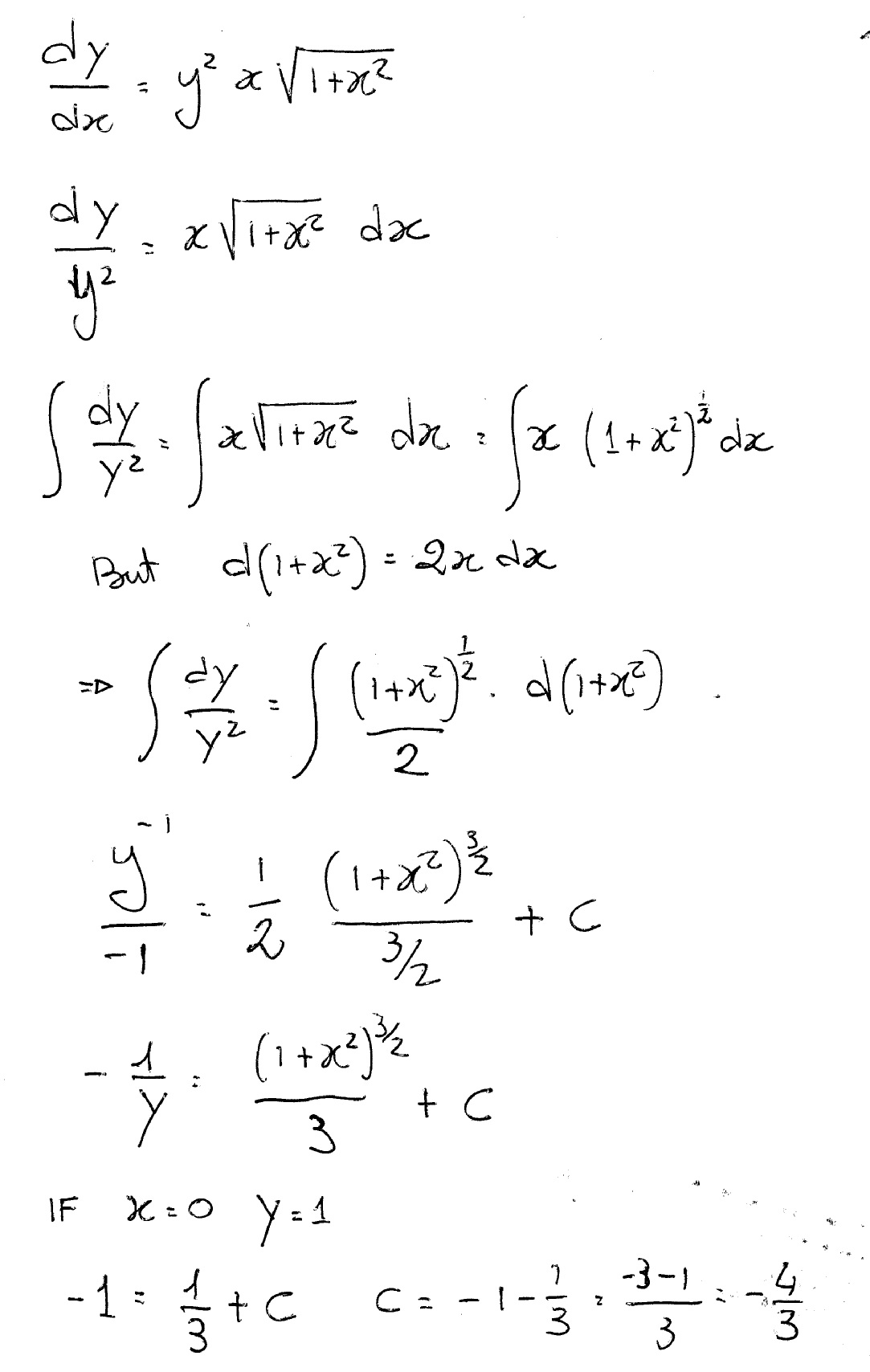



How Do You Solve Dy Dx Y 2xsqrt 1 X 2 Where Y 1 When X 0 Socratic




Solve 1 X 2 D 2y Dx 2 X Dy Dx Y X 1 X 2 3 2 Mathematics 2 Question Answer Collection




Y 2 X 2 Dy Dx Xy Dy Dx Youtube
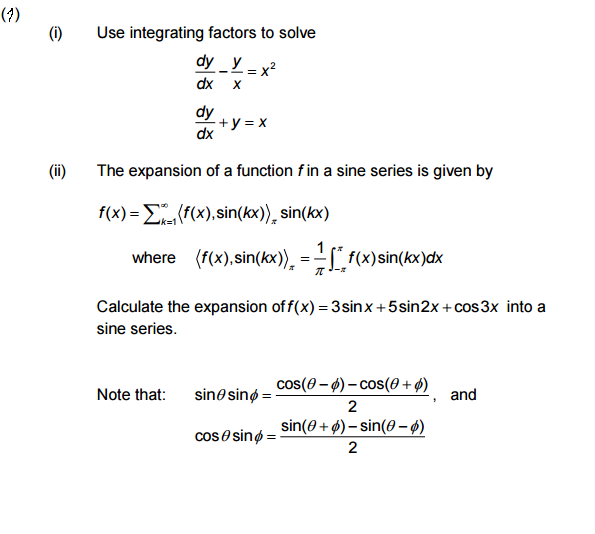



Solved Use Integrating Factors To Solve Dx Dy Y X X 2 Chegg Com




Solve Dy Dx Y X X 2 Y 6
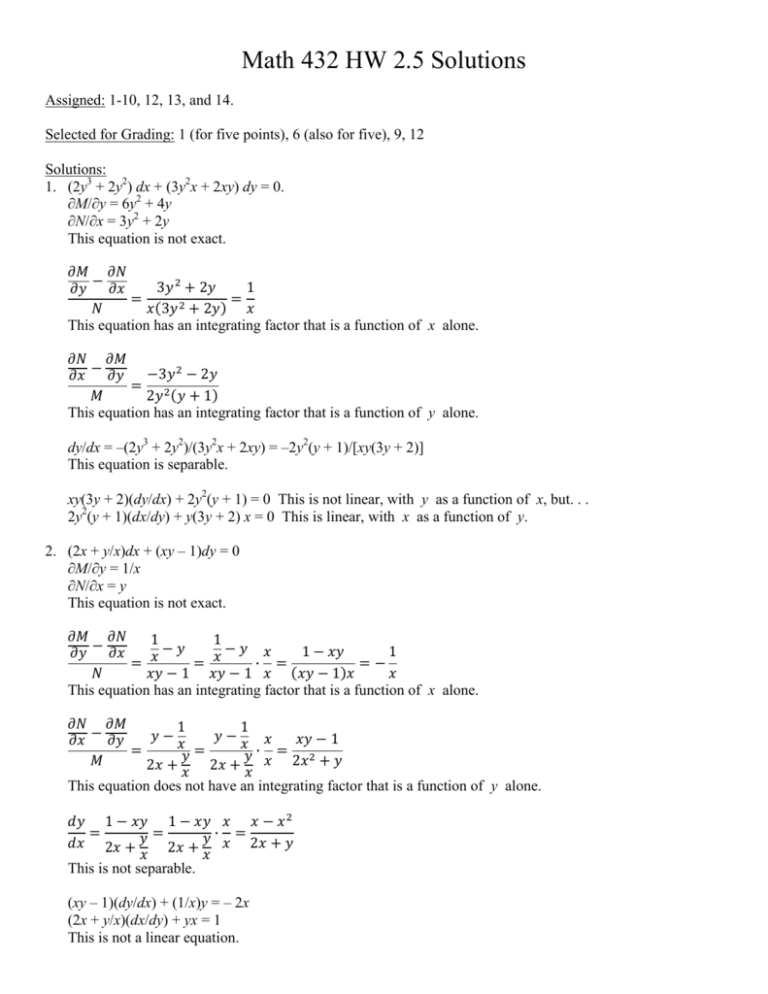



Math 432 Hw 2 5 Solutions




Ex 9 4 12 Find Particular Solution X X2 1 Dy Dx 1 Y 0



1



D Dx Formula




Solve The Differential Equation X Dy Dx Y Cube X Youtube



If Y X X 2 Prove That X Dy Dx 1 Y Y Sarthaks Econnect Largest Online Education Community




Dy Dx Y X Cosec Y X 0 Y 0 When X 1




Y 2 X 2 Dy Dx Xy Dy Dx Youtube
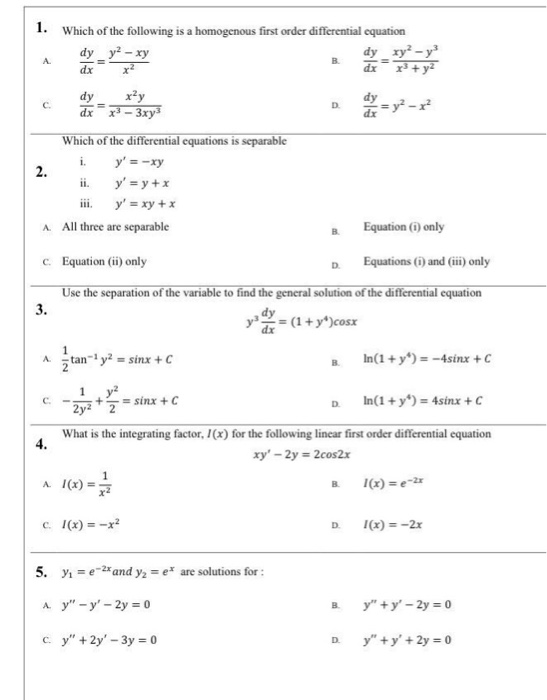



Solved Which Of The Following Is A Homogenous First Order Chegg Com




Solved Solve The Separable Differential Equation Dy Dx Chegg Com




Bernoulli Equation For Solving Differential Equation Dy Dx Y X X 2y 2 Youtube




Solve The Differential Equation Dy Dx Y X X 3y 2 With Substitution Method Youtube




9 X Dy Dx Y X 2 Sen X Ecuaciones Lineales Alexander Estrada Youtube
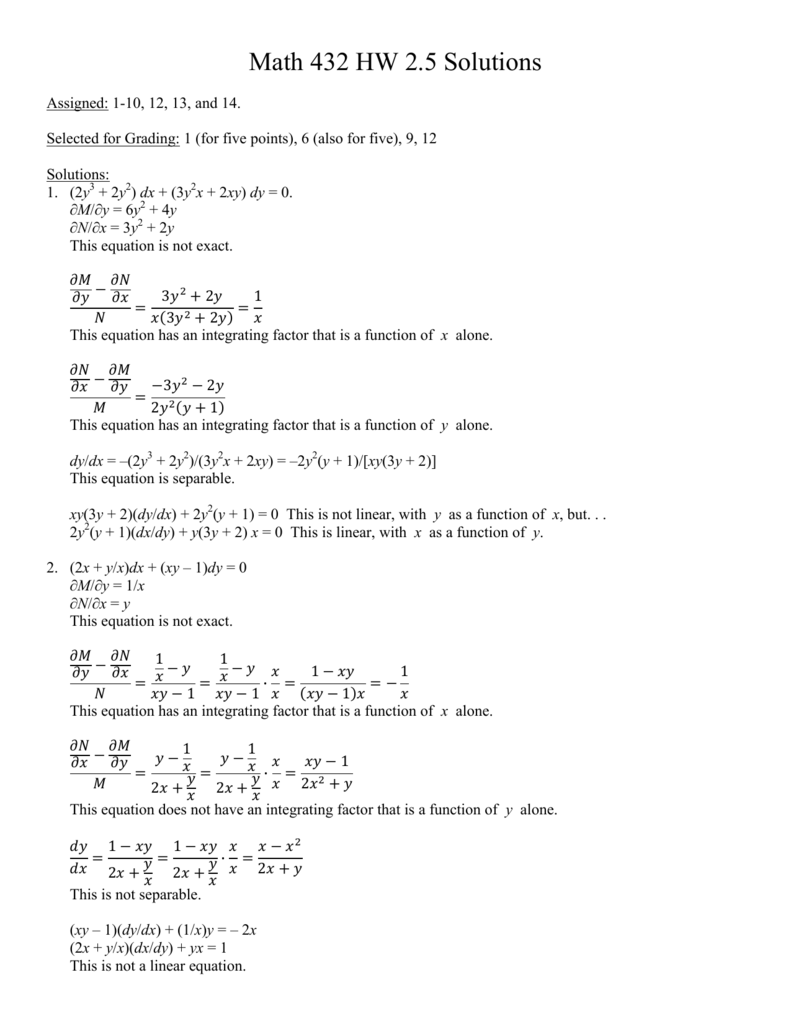



Math 432 Hw 2 5 Solutions



Find The General Solution For The Following Differential Equations X Dy Dx Y X 1 E X X 0 Sarthaks Econnect Largest Online Education Community
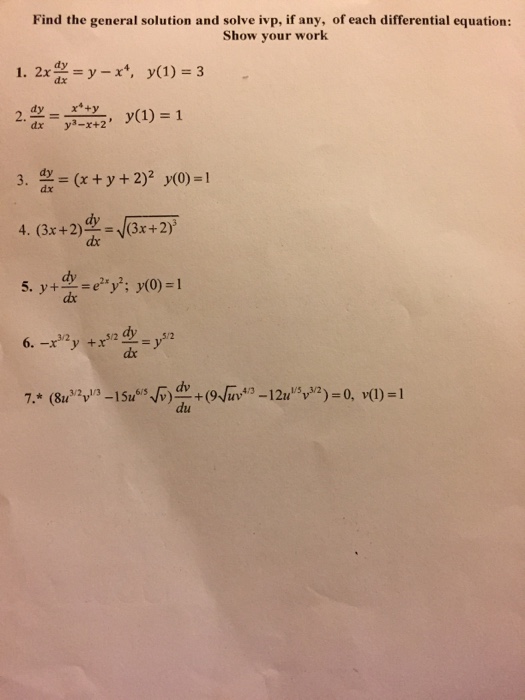



Solved Find The General Solution And Solve Ivp If Any Of Chegg Com




Ex 9 6 3 Find General Solution Dy Dx Y X X2 Ex 9 6




X Dy Dx Y X Cos 2 Y X Youtube



Solve The Following Differential Equation X Dy Dx Y Xcos 2 Y X Sarthaks Econnect Largest Online Education Community




Ex 9 4 16 For Xy Dy Dx X 2 Y 2 Find Solution




Solve X 2 D 2y Dx 2 X Dy Dx Y 0 Given That Y X 1 X Is A Solution Of It Youtube




The Solution Of Y X 5 Dy Y X 1 Dx Is




Ex 9 5 6 Solve Differential Equation X Dy Y Dx Root X2 Y2 Dx




Linear Differential Equation X Dy Dx Y X 2sin X With Transient Terms And Interval For Solution Youtube



Solve Dy Dx Y X Log Y Y X 2 Log Y 2 Sarthaks Econnect Largest Online Education Community




Solving Differential Equation 2xy Dy Dx Y 2 X 2 0 Youtube




Solved Xyy Y 2x J 2xy Y Y2 I K Jdx Xdy 0 22 I Dx 3 In X2 Dy M Dy 4 2 1 N Dy




Solved X Dy Dx Y E X X 0 E Xdy Dx 2e Xy 1 Xy Chegg Com




Ex 9 6 7 Find General Solution X Log X Dy Dx Y 2 X Log X




If Y X Is The Solution Of Dy Dx X 2 1 Y 2 Y 0 2 Then Y 3 Homeworklib



What Is The Solution Of This Differential Equation Y X 2 Y 2 1 Dx X X 2 Y 2 1 Dy 0 Quora



Solve The Linear Differential Equation X Dy Dx Y X Log X Sarthaks Econnect Largest Online Education Community
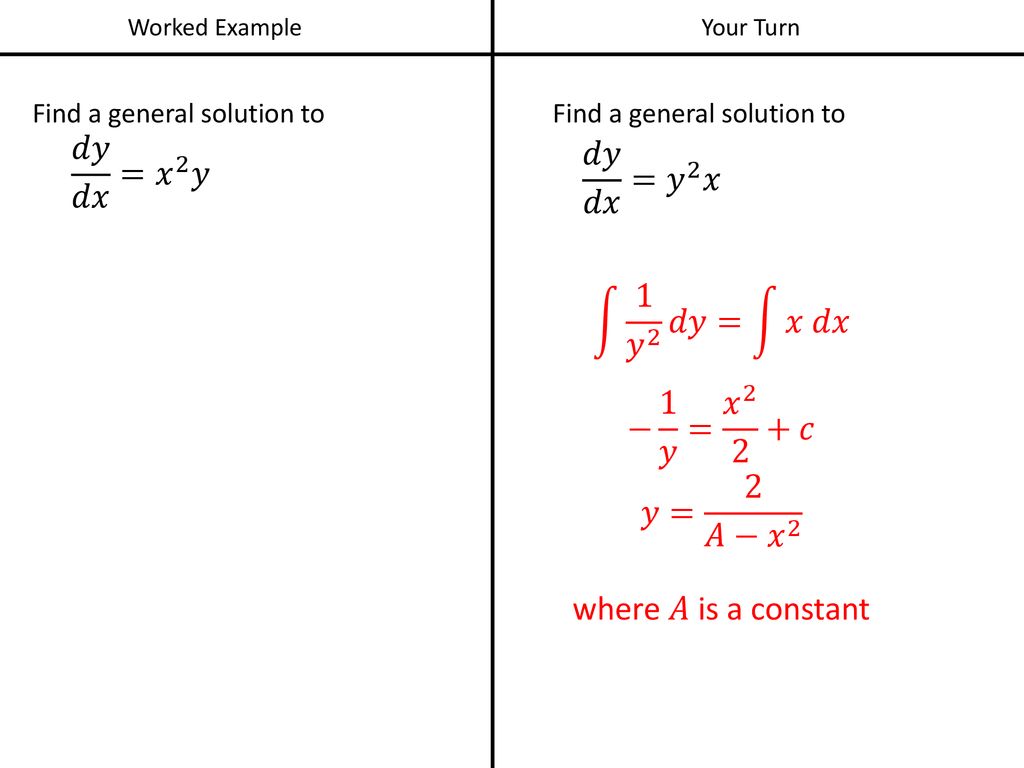



Differential Equations Separation Of Variables Ppt Download
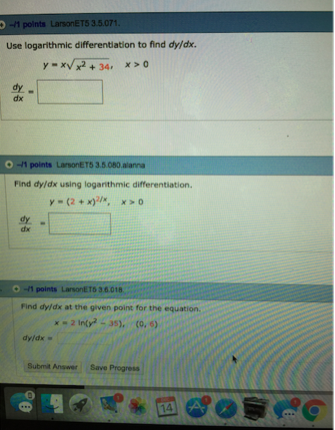



Solved Use Logarithmic Differentiation To Find Dy Dx Y X Chegg Com



What Is The Solution Of This Differential Equation X 1 Dy Dx Y E 3x X 1 2 Quora



How To Solve The Differential Equation Dy Dx Y X X 2 Given Y 2 3 What Is The Value Of Y When X 1 2 Quora



1



What Is The Solution Of This Differential Equation X 1 Dy Dx Y E 3x X 1 2 Quora




Solve X Dy Dx Y X 1 Ex Brainly In




Solved Find The General Solution Of The Given Differential Chegg Com
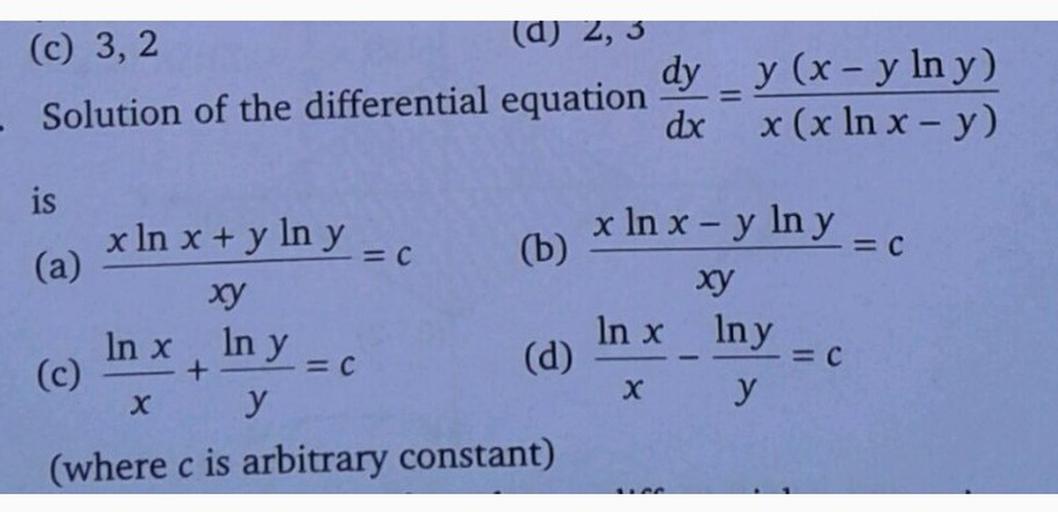



Solution Of The Differential Equation Dy Dx Y X Math



Find The General Solution Of Differential Equations 1 X Dy Dx Y E 3x 1 X 2 Sarthaks Econnect Largest Online Education Community
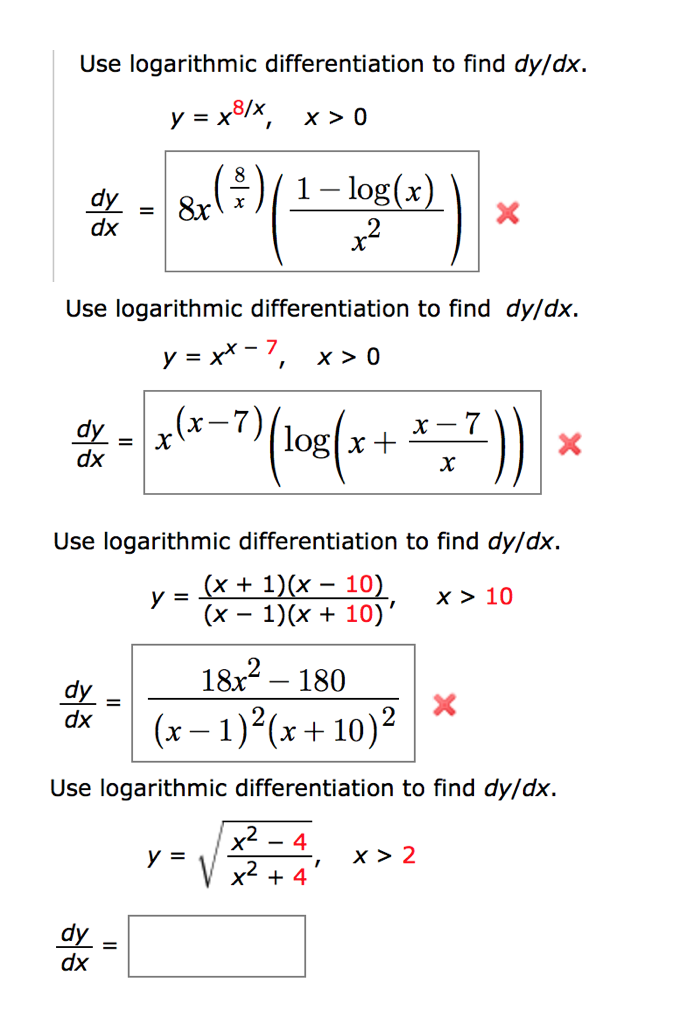



Solved Use Logarithmic Differentiation To Find Dy Dx Y Chegg Com



How To Find Dy Dx Of The Function Y X 1 X 2 X 1 2 Quora
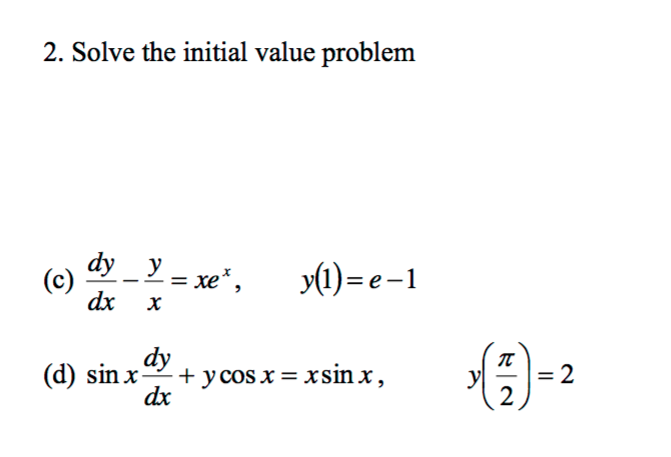



Solved Solve The Initial Value Problem Dy Dx Y X Xe X Chegg Com



How To Solve This Differential Equation Y Xy 2 Dx X X 2 Y 2 Dy 0 Quora




Solved Solve The Following X Dy Dx Y X 2 Dy Dx 2y Chegg Com




Xy Dy Dx Y 3e X 2 Youtube




Example 21 Find General Solution Ydx X 2y2 Dy 0




Solved Solve Dy Dx Y X 2 5 X 2 Y 1 2 Chegg Com



Solve X Dy Dx Y X 2 Y 2 Homogeneous Differential Equations Sarthaks Econnect Largest Online Education Community



What Is The Differential Equation Of X 2 D 2y Dx 2 X Dy Dx Y X Quora




Y 3 C Factory Sale 60 Off Www Nogracias Org




Homogeneous Differential Equation Y 2 Yx Dx X 2dy 0 Youtube
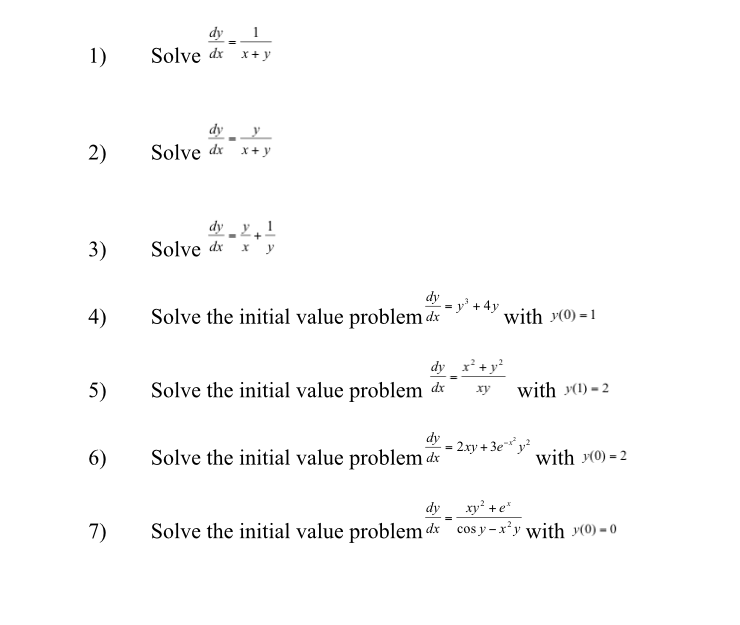



Solved Solve Dy Dx 1 X Y Solve Dy Dx Y X 1 Y Solve The Chegg Com




Solve X Dy Dx Y Y 2logx Youtube




Example Find General Solution X Dy Dx 2y X2 Examples
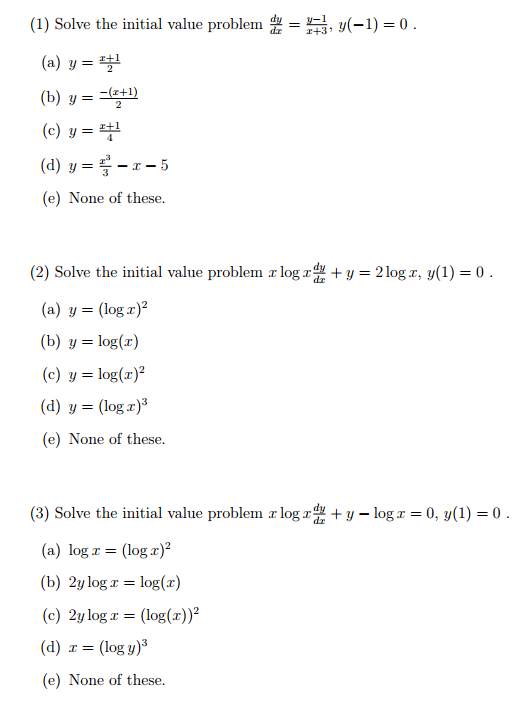



Solved Solve The Initial Value Problem Dy Dx Y 1 X 3 Chegg Com



Solve The Differential Equations X Dy Dx Y 2 Y 2 X 2 Sarthaks Econnect Largest Online Education Community




Solve Dy Dx Y X Y 2 X 2 Maths Questions



0 件のコメント:
コメントを投稿